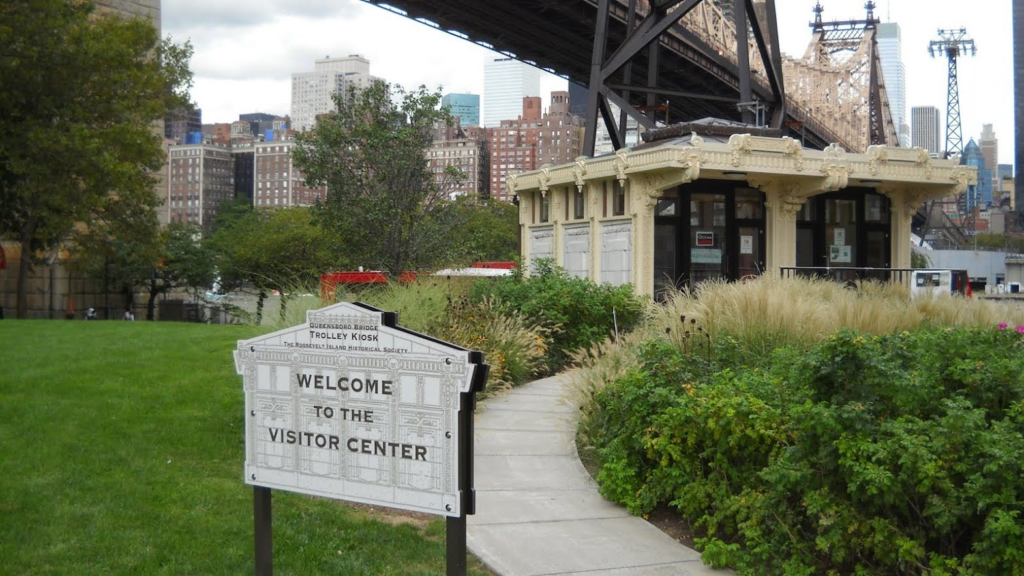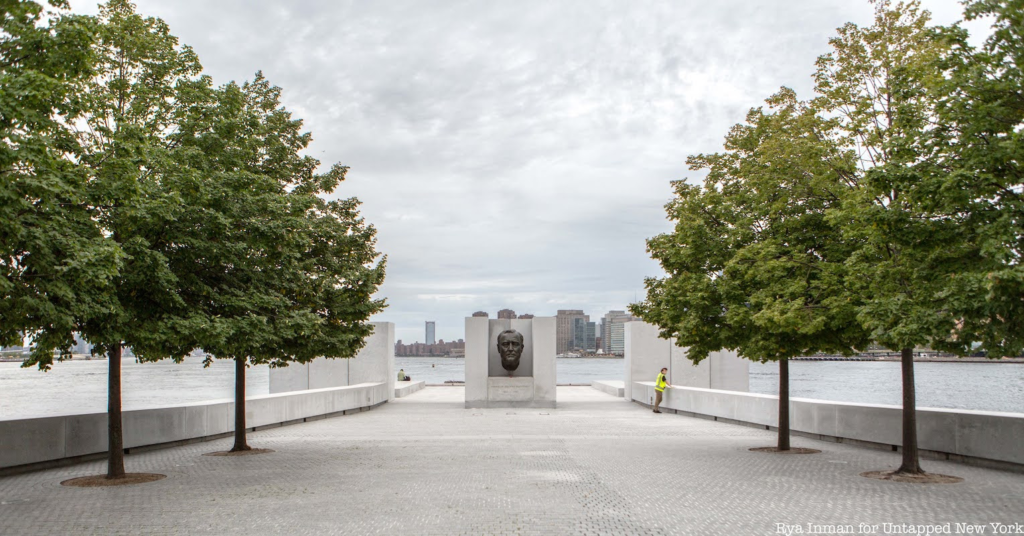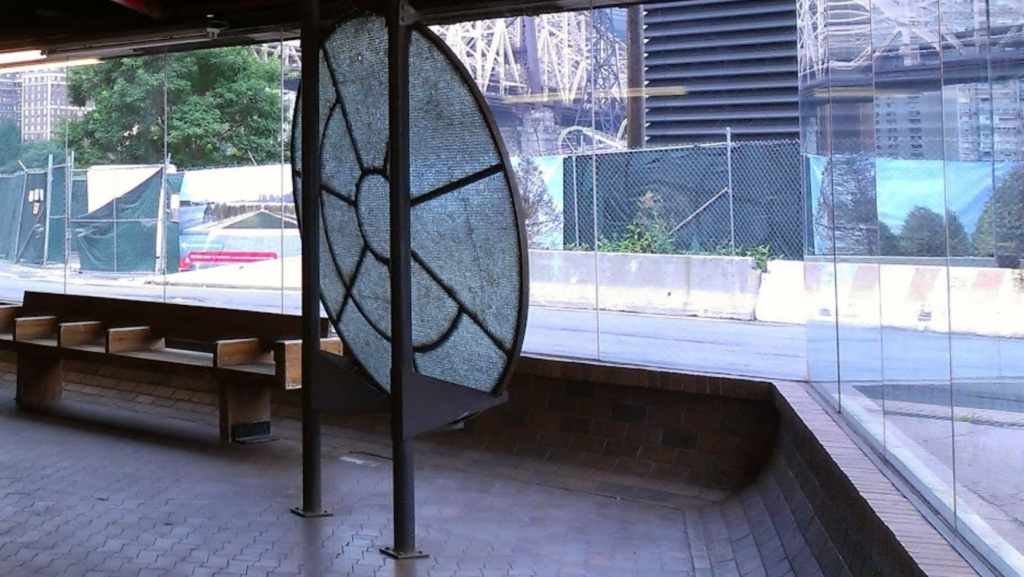Friday, May 19, 2023 – SOME ISLAND INFORMATION FROM UNTAPPED NEW YORK


FROM THE ARCHIVES
FRIDAY, MAY 19, 2023
ISSUE 994
WHAT
UNTAPPED NEW YORK
SAYS ABOUT
ROOSEVELT ISLAND
PART 2
JUDITH BERDY
13 SECRETS OF NYC’S ROOSEVELT ISLAND
8. The Visitors Center Was Part of a Lost Trolley Line

The adorable Visitors Center tucked at the base of Queensboro Bridge has a fascinating history, and secrets of its own. The tiny structure dates back to 1909 when the Queensboro Bridge had a trolley line that went to Astoria, Flushing, College Point, Corona, Steinway and Queens Boulevard. There were originally five kiosks located between the inbound and outbound lower level roads between 59th and 60th Street. After the last trolley ran on this line in 1957, three of the five kiosks were demolished. One was moved to the Brooklyn Children’s Museum in Crown Heights where it functioned as the entrance to the museum.
When the museum was redesigned in 2003, the Roosevelt Island Historical Society (RIHS) wanted to bring the kiosk back to the Manhattan side of the bridge. After a four year effort, the kiosk opened in 2007. It is run by the Roosevelt Island Historical Society today and serves as resource point for those looking for more information about the island. Inside, look up and you’ll find Guastavino tiling, the familiar herringbone patterened arch system found in Grand Central Terminal, Ellis Island, the decommissioned City Hall subway station, and many more places. Learn more about the Visitors Center here!
9. Roosevelt Island’s Tramway Was Initially Temporary

The bright red tramway system carrying commuters from Manhattan to Roosevelt Island and back was established in 1976 as a temporary means of transportation for island residents while they awaited the completion of the island’s subway link. By this time, the trolley tracks connecting Roosevelt Island with mainly Manhattan had been slowly deteriorating beyond repair. However, by the time the link was there, the tramway had already become an integral mode of transportation, so it continued to operate and became permanent.
The tram was built by Swiss company Von Roll, though the current tram is the second iteration; the tramway underwent a major renovation in 2010 that added a dual-hall system and new cars. Today it remains a crucial part of New York City’s transit system which has carried well over 26 million passengers, serving as North America’s first aerial tramway used for commuter transit. The tram was notably the last mode of transportation in New York City to adopt the MetroCard, doing so in 2003.
10. FDR Four Freedoms Park Is Louis Kahn’s Only New York City Work

| The FDR Four Freedoms Park, which was finished in 2012, took 40 years to finally complete. Over the years, economic crises and political sensibilities halted progress on the park until architect Gina Pollara revived the project. As such, Roosevelt Island’s Four Freedoms Park is the only establishment designed by Louis Kahn in New York City. The city commissioned architect Louis Kahn for the memorial, which was his last major work before his death in 1974. Kahn died of a heart attack in Penn Station, with a final rendering of his completed design for Four Freedoms Park in his briefcase at the time.All materials for the memorial were shipped in via barges, which were loaded up in New Jersey and sent down the East River. An excerpt of Roosevelt’s 1941 State of the Union speech outlining his Four Freedoms is inscribed on the back of the stone frame that holds up his bust, Each granite paving stone is a cube and measures four feet by four feet by four feet. Four Freedoms Park also neighbors a cat sanctuary just to the north inside Southpoint Park, At the opening ceremony, Governor Cuomo said the park was a testament to Louis Kahn, whose design lay “dormant for years but could be picked up and be as vital and current as it was when he designed it.” |
| 11. Roosevelt Island Was Once The Equivalent of Riker’s Island |
 Many have probably heard of Nellie Bly, a woman who pretended to be insane in order to write a breakthrough investigative piece on the cruelty of the Women’s Lunatic Asylum on Blackwell’s Island. This asylum was run inside Octagon Building which still stands on Roosevelt Island. The asylum opened in 1838, and rumors quickly spread about its brutal abuse of the inmates. In her expose, “Ten Days in a Madhouse,” Bly called the asylum a “human rat-trap” with staff who “choked, beat and harassed patients.”The asylum moved to Ward’s Island a little while later, so this building became the Metropolitan Hospital, which then moved to Harlem in the 1950s. The asylum’s original octagon still stands as a classy apartment complex near a beautiful community garden, quite a contrast to what it used to be. Visitors are generally welcome to enter the octagon, which serves as the lobby, and look at the old photographs on display. |
 On the island, Bly’s legacy is remembered with a public art piece called The Girl Puzzle. This piece consist of a series of faces that depict women who have endured hardship in their lives and were made stronger because of it. In the center of the monument is a Bly’s face cast in silver bronze. Bly’s face is flanked by the four bronze faces meant to represent Asian American, Black, young, older, and queer women, each rendered in partial sections to appear like giant puzzle pieces. |
| 12. The Blackwell House Is One of the Only New York Farmhouses From Immediately After the American Revolution |
 A descendant of Robert Blackwell, James Blackwell, built a house called the Blackwell House, now on Main Street, in about 1796. When the city bought Blackwell’s Island, the island became less agricultural and more institutional. When a penitentiary was erected in 1829, the wooden house became a residential place for institutional administrators. The house was abandoned during the 1900s and restored in the early 1970s.In addition to being one of the few New York farmhouses from the period immediately following the Revolutionary War, it is also the only surviving building on Roosevelt Island from the time period when the island was still private property. It was added to the National Register of Historic Places in 1972. |
| 13. Roosevelt Island Used to Have An Artificial Geyser |
 |
 The Delacorte Fountain was dedicated in 1968 by George T. Delacorte, who wanted New York to have an equivalent to Switzerland’s Jet D’Eau. It sprayed East River water hundreds of feet into the air across from the United Nations on the southern edge of Roosevelt Island. However, the New York Times reported in 1987 that the city’s Parks Commissioner had fears that “liquid waste was being flung 400 feet in the eyes and faces of people who lived on Sutton Place.”In response to this, the water was chlorinated, which lowered its height to 240 feet. During the later drought years, people worried the fountain would represent overconsumption of water, so it was turned off. In 1985, the powerful streams of water washed off the topsoil from some newly planted trees and crushed a car roof. The next year, the geyser stopped working. |
THURSDAY PHOTO OF THE DAY
GLASS SCULPTURE AT R.I. SUBWAY STATION
GLORIA HERMAN , NINA LUBLIN AND ALEXIS VILLAFANE GOT IT,

FRIDAY PHOTO OF THE DAY
SEND YOUR ANSWER TO:
ROOSEVELTISLANDHISTORY@GMAIL.COM

Text by Judith Berdy
Thanks to Bobbie Slonevsky for her dedication to Blackwell’s Almanac and the RIHS
Thanks to Deborah Dorff for maintaining our website
Edited by Melanie Colter and Deborah Dorff
All image are copyrighted (c) Roosevelt Island Historical Society unless otherwise indicated
UNTAPPED NEW YORK
JUDITH BERDY
THIS PUBLICATION FUNDED BY DISCRETIONARY FUNDS FROM CITY COUNCIL MEMBER JULIE MENIN & ROOSEVELT ISLAND OPERATING CORPORATION PUBLIC PURPOSE FUNDS.


Copyright © 2022 Roosevelt Island Historical Society, All rights reserved.Our mailing address is:
rooseveltislandhistory@gmail.com

Leave a comment